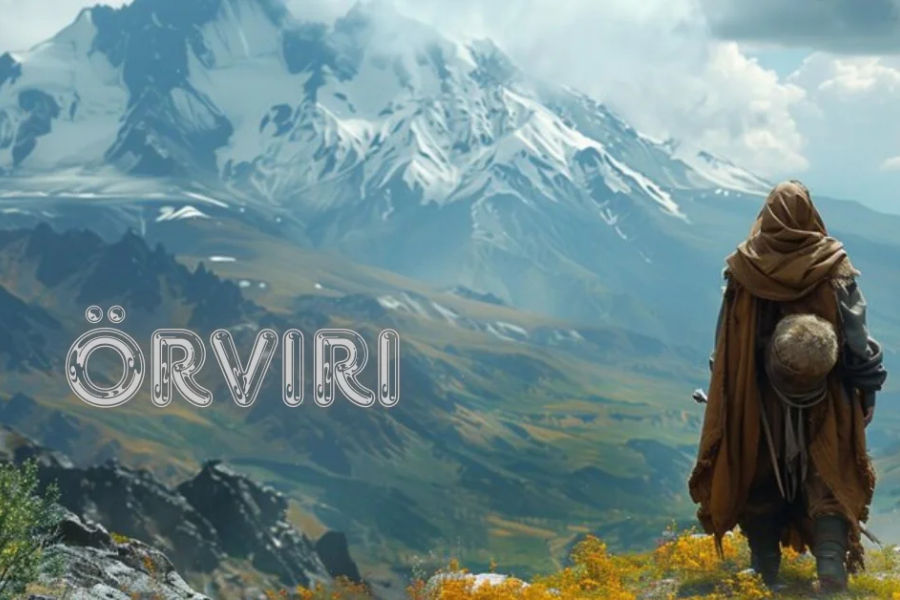Understanding Örviri: Origins, Practices, and Significance
Örviri is a term that originates from Icelandic culture, with deep roots in the country’s ancient beliefs and customs. It has maintained its importance throughout centuries and continues to play a role in Icelandic society today. The word “örviri” is composed of two Icelandic words: “ör,” meaning “arrow,” and “virki,” meaning “fortification,” which together translate to “arrow fortification.”
A Glimpse into the Rich History of Örviri
The term örviri may seem unfamiliar to many, but it carries a deep history that has influenced its meaning and usage over time. Initially, örviri referred to the act of connecting various elements or people to serve a unified purpose. This sense of connection was integral to the concept’s evolution.
Historical texts such as Icelandic sagas from Viking settlers use the term örviri to describe the courage of warriors who united clans and families, often through peaceful negotiations. Some researchers also see a link between örviri and Norse mythology, particularly with the god Odin, associated with wisdom, war, and knowledge. Odin’s ravens, Huginn and Muninn, symbolize the gathering of wisdom, a practice that aligns with the essence of örviri.
Decoding the Essence of Örviri
Örviri, derived from Icelandic language and myth, embodies wisdom, knowledge, and protection. Originally linked to a deity revered for guiding and protecting with intelligence, the term has expanded over time to encompass broader meanings. It is often associated with individuals who are exceptionally perceptive or enlightened, akin to terms like sage or guru.
Today, örviri is used to describe profound thoughts or concepts that challenge norms, fostering deep reflection. Its historical connection to Odin as the god of knowledge reinforces its association with learning, intellectual exploration, and spiritual depth.
How the Practice of Örviri Is Performed
Practicing örviri is deeply embedded in Scandinavian traditions and involves connecting with nature, the spirit world, and one’s inner self. Central to its practice is the belief that everything in nature, from animals to plants, carries an inherent spirit or energy. Through various rituals, practitioners aim to tap into these energies, gaining clarity and guidance.
A significant aspect of örviri is shamanism, where practitioners communicate with spirits for insight, often using tools like crystals or drums to enter a trance state. Meditation and nature-based ceremonies also play a role, with practitioners spending time outdoors in forests or mountains to harmonize with the natural world.
The Potential Benefits and Limitations of Örviri
Örviri offers several health and wellness benefits:
- Mental Well-being: Studies suggest that örviri can help alleviate anxiety, stress, and depression.
- Immune Support: Rich in antioxidants, örviri strengthens immunity and helps protect against illness.
- Pain Relief: With its anti-inflammatory properties, örviri can ease chronic pain from conditions like arthritis.
- Digestive Health: The herb promotes healthy digestion and can relieve issues like bloating or indigestion.
- Improved Sleep: Örviri’s sedative effects make it useful for those dealing with insomnia.
- Cancer Protection: Some research indicates örviri may inhibit cancer cell growth.
However, there are potential drawbacks, such as allergic reactions, particularly in individuals sensitive to similar plants.
Comparing Örviri with Other Healing Traditions
Örviri stands out as a unique practice within the realm of healing techniques. While it shares similarities with other traditions, it also has distinguishing features. For example, acupuncture, a practice rooted in Chinese medicine, uses needles to stimulate energy flow in the body. Unlike acupuncture, örviri employs hot steam to apply heat, aiming to improve circulation and relaxation.
Another comparison is Reiki, a Japanese practice that involves energy healing through touch. While both Reiki and örviri focus on spiritual well-being, Reiki requires specific attunements, whereas örviri can be practiced intuitively without external initiation.
Dispelling Common Misunderstandings about Örviri
There are several misconceptions about örviri due to its mystical aura and limited research:
- “Örviri is a mythical creature”: Contrary to this belief, örviri is not a creature but a concept rooted in Icelandic tradition.
- “Örviri can shape-shift or turn invisible”: Some believe that örviri has supernatural abilities, but it actually relies on its ability to blend into its environment as a defense mechanism.
- “Örviri can communicate with humans”: There is no evidence suggesting that örviri can talk or understand human language.
- “Örviri is inherently dangerous”: While örviri can defend itself, it is generally a shy and non-aggressive entity.
Personal Reflections on the Practice of Örviri
Individuals who practice örviri often report a deep sense of connection to nature, heightened mindfulness, and clarity. Many practitioners find that the meditative aspects of the practice bring inner peace and emotional balance, allowing them to experience greater creativity and physical well-being. Some also report improved flexibility and strength from incorporating örviri into their routines.
Key Facts About Örviri
- Cultural Roots: Örviri originates from ancient Icelandic culture and is deeply connected to the country’s historical and spiritual practices.
- Meaning of the Term: The word “örviri” is derived from two Icelandic terms: “ör” (arrow) and “virki” (fortification), together meaning “arrow fortification.” It symbolizes protection and the warding off of negative forces.
- Connection to Norse Mythology: Örviri has associations with Norse mythology, particularly the god Odin, known for wisdom, knowledge, and protection. It is believed that the practice of örviri was used to defend against supernatural entities such as gods, elves, and giants.
- Symbolism: The primary symbol associated with örviri is an upward-pointing arrow intersected by three horizontal lines, each representing one of the core elements of nature: the sky, the land, and the sea. These elements unify under a protective force.
- Spiritual Practice: Örviri is a spiritual practice, often involving shamanic rituals, meditation, and nature-based ceremonies. Practitioners connect with nature’s energy to gain guidance, healing, and insight.
- Health Benefits: Örviri is believed to offer various physical and mental health benefits, including improving immune system function, alleviating pain, enhancing digestion, and promoting better sleep.
- Modern Relevance: While örviri originated as part of Icelandic folklore and myth, it continues to be practiced today, with increasing interest in its holistic health and wellness aspects.
Conclusion
Örviri, a concept rooted in Icelandic culture, has much to offer both in terms of spiritual and physical well-being. Its historical connections to Norse mythology and its emphasis on connecting with nature and spiritual energies have proven beneficial for many. With its rising popularity, örviri is gaining recognition as a holistic approach to health and well-being, demonstrating its lasting relevance in modern society.
FAQs About Örviri
1. What does örviri mean?
- Örviri is an Icelandic term that translates to “arrow fortification,” symbolizing protection against negative forces or energies. It has deep connections to Norse mythology and traditional spiritual practices.
2. How is örviri practiced?
- The practice of örviri involves rituals, ceremonies, and connecting with the natural world. It is often linked to shamanic practices, where practitioners use tools such as drums, crystals, and herbs to connect with the spirit world.
3. What are the health benefits of örviri?
- Örviri has been linked to various health benefits, such as improving mental well-being, boosting the immune system, reducing pain, promoting digestion, and aiding sleep. It is also believed to have anti-cancer properties.
4. Is örviri related to Norse mythology?
- Yes, örviri has connections to Norse mythology, particularly with the god Odin, who is associated with wisdom and protection. The practice is thought to have been used to protect against mythical beings and supernatural forces.
5. Can anyone practice örviri?
- Yes, örviri can be practiced by anyone interested in connecting with nature and seeking spiritual guidance. While some aspects involve rituals, anyone can begin practicing by meditating in nature and focusing on mindfulness.
6. What is the symbol of örviri?
- The most common symbol associated with örviri is an arrow pointing upward, intersected by three horizontal lines. These lines represent the sky, land, and sea, symbolizing unity and protection from the elements.
7. Is örviri recognized in modern wellness practices?
- Yes, örviri is gaining recognition as part of holistic health practices, with people using it for mental health benefits, spiritual growth, and physical healing.
8. Are there any risks or side effects associated with örviri?
- While örviri is generally considered safe, some individuals may experience allergic reactions or sensitivity, particularly if they are prone to allergies related to plants or natural remedies.
Stay in touch to get more news & updates on World Trend!





